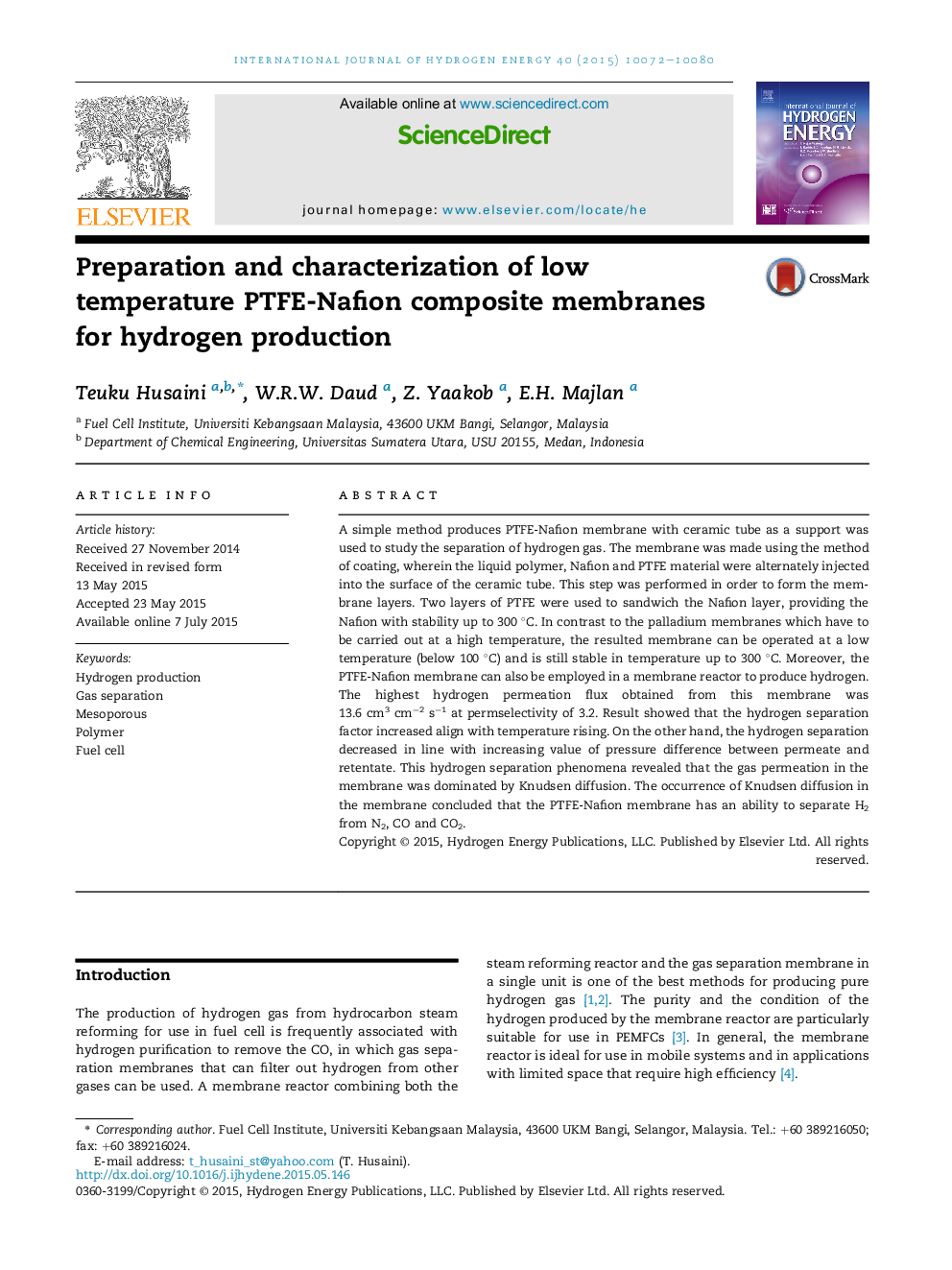| Article ID | Journal | Published Year | Pages | File Type |
|---|---|---|---|---|
| 7714718 | International Journal of Hydrogen Energy | 2015 | 9 Pages |
Abstract
A simple method produces PTFE-Nafion membrane with ceramic tube as a support was used to study the separation of hydrogen gas. The membrane was made using the method of coating, wherein the liquid polymer, Nafion and PTFE material were alternately injected into the surface of the ceramic tube. This step was performed in order to form the membrane layers. Two layers of PTFE were used to sandwich the Nafion layer, providing the Nafion with stability up to 300 °C. In contrast to the palladium membranes which have to be carried out at a high temperature, the resulted membrane can be operated at a low temperature (below 100 °C) and is still stable in temperature up to 300 °C. Moreover, the PTFE-Nafion membrane can also be employed in a membrane reactor to produce hydrogen. The highest hydrogen permeation flux obtained from this membrane was 13.6 cm3 cmâ2 sâ1 at permselectivity of 3.2. Result showed that the hydrogen separation factor increased align with temperature rising. On the other hand, the hydrogen separation decreased in line with increasing value of pressure difference between permeate and retentate. This hydrogen separation phenomena revealed that the gas permeation in the membrane was dominated by Knudsen diffusion. The occurrence of Knudsen diffusion in the membrane concluded that the PTFE-Nafion membrane has an ability to separate H2 from N2, CO and CO2.
Related Topics
Physical Sciences and Engineering
Chemistry
Electrochemistry
Authors
Teuku Husaini, W.R.W. Daud, Z. Yaakob, E.H. Majlan,
